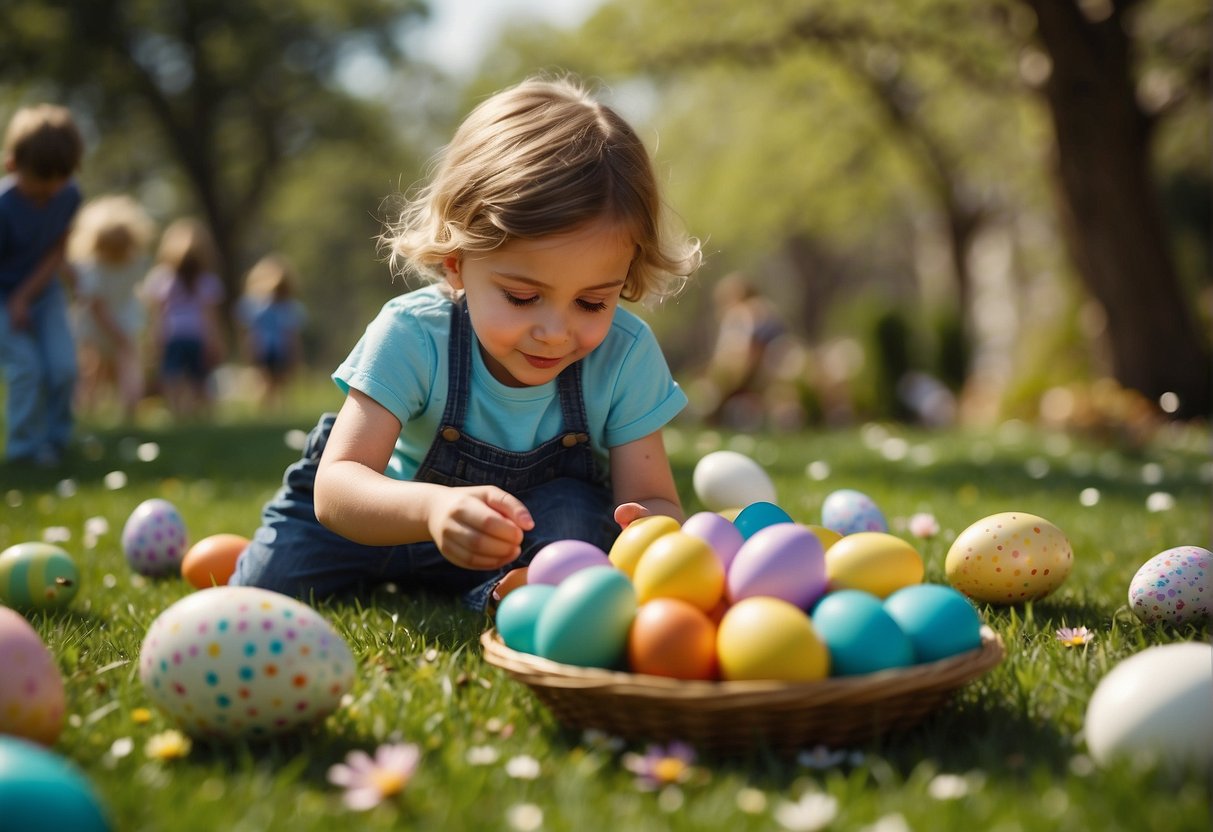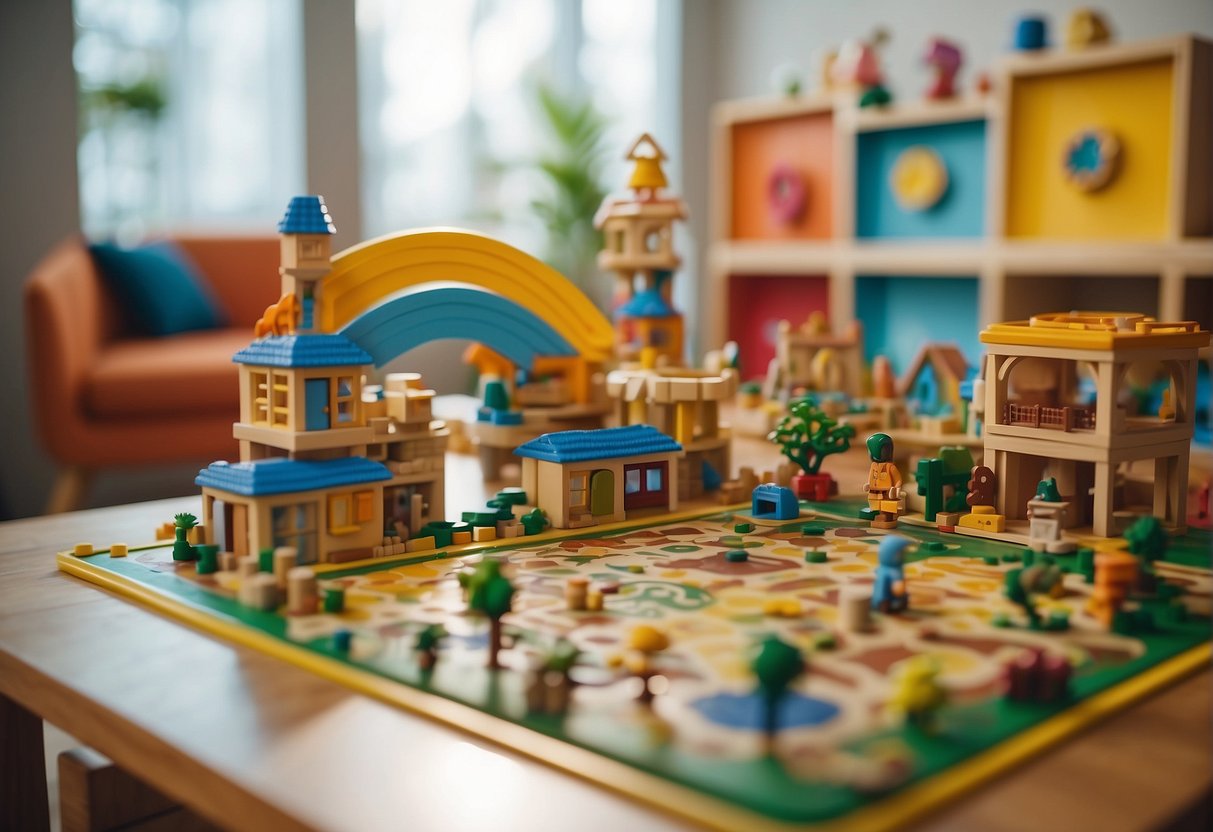Scavenger hunts add excitement and adventure to birthday celebrations. They turn parties into interactive experiences where guests search for clues and solve puzzles. These hunts can be tailored to fit any age group or party theme.

Birthday scavenger hunts create lasting memories and bring people together through teamwork and friendly competition. They can be set up indoors or outdoors, and can range from simple treasure hunts to complex multi-stage adventures. With some planning and creativity, hosts can craft a unique and fun experience for their birthday guests.
1) Photo Booth Challenge

A photo booth challenge adds fun to a scavenger hunt birthday party. Set up a simple booth using a clothing rack and white curtains. Hang colorful decorations like garlands and honeycomb balls.
Include props for guests to use. Emoji cutouts, oversized frames, and funny hats work well. Create signs with party-themed hashtags for people to hold.
Make a list of photo challenges for guests to complete in the booth. Examples include “best group selfie” or “silliest face”. Give prizes for the most creative or funny photos.
Encourage guests to share their booth pictures on social media. This spreads the fun beyond the party and creates lasting memories.
A photo booth challenge combines creativity, laughter, and teamwork. It’s a great way to get everyone involved and capture the spirit of the celebration.
2) Clue-Based Scavenger Hunt

A clue-based scavenger hunt adds excitement to a birthday celebration. Participants follow a series of riddles or hints to find hidden items or reach specific locations.
The birthday host can create clever clues that lead players from one spot to another. These clues can be simple rhymes, puzzles, or word games tailored to the players’ age group.
Each clue should point to the location of the next one. For example, “I’m in the kitchen, and you’ll never eat me, but the dog sure loves to greet me” could lead to dog food.
The final clue usually reveals a special prize or the main birthday celebration area. This type of hunt works well both indoors and outdoors, depending on the available space.
For added fun, the host can include tasks or challenges at each clue location. These might involve taking funny photos, solving mini-puzzles, or collecting small objects.
Clue-based hunts can be adapted for different ages. Simpler clues work best for younger kids, while adults might enjoy more complex riddles or brain teasers.
3) Nature Scavenger Hunt

A nature scavenger hunt is a fun outdoor birthday activity that gets kids exploring the world around them. It encourages observation skills and appreciation for nature.
To set up, create a list of items for kids to find in a park, backyard, or nearby nature area. Include common objects like leaves, rocks, flowers, and pinecones.
Add some animal-related items to the list too. Kids can search for bird feathers, snail shells, or animal tracks. This adds excitement and teaches them about local wildlife.
For older kids, make the hunt more challenging. Ask them to find specific types of plants or insects. They can use field guides or smartphone apps to help identify what they find.
Provide each child with a bag or container to collect their items. Give them a clipboard with the list and a pencil to check off what they find.
Set a time limit to keep the hunt moving. When time is up, gather everyone to share their discoveries. This lets kids learn from each other and talk about what they found interesting.
Consider giving small prizes for the most items found or most unique discovery. This adds a fun competitive element to the hunt.
4) Neighborhood Hunt

A neighborhood scavenger hunt can turn a regular birthday party into an exciting adventure. Kids love exploring their surroundings and searching for hidden treasures.
To set up the hunt, create a list of common items found in the neighborhood. Include things like a red mailbox, a garden gnome, or a house with blue shutters.
Give each child or team a copy of the list and a bag to collect small items. Set a time limit and boundaries for the hunt area to keep everyone safe.
For added fun, include photo challenges. Kids can take pictures of themselves next to specific landmarks or doing silly poses.
Consider adding a point system. Assign different values to items based on how hard they are to find. The team with the most points at the end wins a prize.
After the hunt, gather everyone back at the party location to share their findings. This gives kids a chance to talk about their adventures and show off their treasures.
A neighborhood hunt gets kids active, encourages teamwork, and creates lasting memories. It’s a budget-friendly option that works well for various age groups.
5) Historic Landmark Quest

A historic landmark quest adds an educational twist to a birthday scavenger hunt. This idea works well for history buffs or curious kids who want to learn about their local area.
Participants can visit different historic sites in their town or city. At each location, they solve clues related to the landmark’s history or significance. This encourages them to read plaques, observe architectural details, or ask staff members questions.
Clues can lead hunters to statues, old buildings, museums, or important monuments. The birthday person might find their next clue hidden near a famous statue or tucked inside a brochure at a local history museum.
For added fun, players can take photos at each landmark as proof they completed the task. This creates a nice memento of the day’s adventures. The quest can end at a final historic spot where everyone gathers for cake and presents.
This type of hunt combines physical activity, problem-solving, and learning. It’s a great way to explore the community while celebrating a birthday in a unique and memorable way.
6) Animal-Themed Hunt

An animal-themed scavenger hunt brings excitement to a birthday celebration. Kids can search for toy animals or pictures hidden around the party area.
Create a list of animals for children to find. Include common creatures like lions, elephants, and monkeys. Add some unexpected animals too, like sloths or penguins.
Hide the animal toys or pictures before guests arrive. Place them in spots that match their natural habitats. A toy fish could go near a water feature, while a bird might perch on a branch.
Give each child a list of animals to find. They can check off each discovery as they go. For younger kids, use pictures instead of words on the list.
Consider adding animal facts to the hunt. Place small cards with interesting information next to each hidden animal. This adds an educational element to the fun.
After the hunt, gather everyone to share their findings. Kids can show off the animals they discovered and talk about what they learned.
7) Treasure Map Adventure

A treasure map adventure adds excitement to a birthday scavenger hunt. Create a detailed map of the party area, marking key locations and landmarks. Hide clues or small treasures at each spot on the map.
Give each child or team a copy of the map to follow. They’ll use it to navigate from one location to the next, solving puzzles or collecting items along the way. This combines map-reading skills with problem-solving.
Make the map look old and weathered for a more authentic feel. Use tea-stained paper or parchment, and add decorative elements like a compass rose or sea monsters. This enhances the treasure hunting theme.
The final destination on the map can lead to the birthday cake or main gift. This builds anticipation and makes the reveal more exciting. Kids will feel like real explorers as they follow the map to find the ultimate treasure.
For younger children, use simple symbols and pictures on the map. Older kids can handle more complex directions and clues. Adjust the difficulty to suit the age group of the party guests.
8) Puzzle Hunt

A puzzle hunt adds a brain-teasing twist to the birthday scavenger hunt. This activity challenges kids to solve riddles and puzzles to find their next clue.
The puzzles can range from simple word searches to more complex logic problems. Each solved puzzle reveals a hint about where to find the next clue or treasure.
Kids can work together in teams to crack the codes. This teamwork builds problem-solving skills and encourages cooperation among friends.
The final puzzle might lead to a big surprise, like the birthday cake or a special gift. This creates excitement and anticipation throughout the hunt.
Parents can tailor the difficulty of the puzzles to match the age group. Younger kids might enjoy picture-based puzzles, while older ones can tackle tougher brain teasers.
A puzzle hunt combines physical activity with mental challenges. It keeps kids engaged and entertained throughout the birthday celebration.
9) Time Capsule Search
A time capsule search adds a unique twist to birthday scavenger hunts. It combines the excitement of a hunt with the nostalgia of preserving memories.
The birthday person can search for items that represent different years or moments in their life. These items can be photos, toys, or small mementos.
Each found item gets placed in a special container. This becomes a time capsule to be opened in the future. It’s a fun way to look back and create a keepsake.
Family and friends can contribute items too. This makes the hunt more collaborative and meaningful. They might include letters, predictions, or small gifts.
The search can happen indoors or outdoors. Clues can lead to spots that hold significance for the birthday person. This adds an extra layer of sentimentality to the hunt.
At the end, everyone can gather to see what’s been collected. It’s a chance to share stories and memories tied to each item. The birthday person then seals the time capsule for future discovery.
10) Virtual Scavenger Hunt
Virtual scavenger hunts are a fun way to celebrate birthdays from afar. They work well for friends and family who can’t be together in person.
To set up a virtual hunt, create a list of items or tasks for participants to find or complete. These can include common household objects, funny selfies, or trivia questions.
Choose a video call platform like Zoom to host the event. Set a time limit, such as 30 minutes, for players to complete the list.
Divide guests into teams if desired. This adds a competitive element and encourages teamwork. Teams can use breakout rooms to strategize.
For added excitement, include themed items related to the birthday person’s interests. This personalizes the experience and makes it more special.
Consider using a dedicated scavenger hunt app or website to manage the game. These tools can make scoring and sharing finds easier.
At the end, tally up points and declare a winner. Celebrate together by singing happy birthday and watching the guest of honor open gifts virtually.
11) DIY Craft Hunt
A DIY Craft Hunt adds a creative twist to the birthday scavenger hunt. This idea combines crafting and searching, making it fun for kids who enjoy hands-on activities.
Set up craft stations around the house or backyard. Each station should have materials for a small project. Hide clues that lead to these stations.
When kids find a station, they complete the craft before moving to the next clue. Crafts can be simple, like decorating a picture frame or making a friendship bracelet.
The final station can be a big craft project that all the kids work on together. This could be decorating a birthday banner or creating a group art piece for the birthday child.
This hunt not only keeps kids busy but also lets them take home their creations as party favors. It’s a great way to mix fun, creativity, and memories into one activity.
Planning a Scavenger Hunt
A great scavenger hunt needs careful planning. Two key aspects are picking a fun theme and setting clear rules. These steps help create an exciting and fair game for everyone.
Choosing a Theme
Pick a theme that fits the birthday person’s interests. Some ideas include:
- Favorite movies or TV shows
- Sports teams
- Hobbies or activities
- Places they love
Match clues and items to the theme. For a Harry Potter fan, hide objects like wands or potions. Use quotes from the books as clues.
Make decorations match the theme too. This adds to the fun atmosphere. For a beach theme, use seashells and sand in the decor.
Setting the Rules
Clear rules keep the game fair and fun. Decide on:
- Time limit (30 minutes to 2 hours)
- Number of items to find (5-20)
- Team size (solo, pairs, or groups)
- Allowed areas to search
- Use of phones or internet
Give a list of items or clues to each player or team. Explain how to win – first to finish or most items found.
Set safety rules too. No running indoors, stay in set areas, and don’t open closed doors or drawers.
Creating Clues and Challenges
Crafting engaging clues and challenges is key to a fun birthday scavenger hunt. The right mix of puzzles keeps players excited and invested throughout the game.
Types of Clues
Riddles make great clues for scavenger hunts. They can be simple or tricky based on the players’ ages. For example: “I’m cold and sweet, find me for a treat” could lead to ice cream in the freezer.
Picture clues work well for younger kids. Use photos of objects or locations around the house or party area.
Rhyming clues add a fun twist. Try something like: “To find your next clue, look in the place where you tie your shoe.”
Word puzzles can challenge older players. Use anagrams, crosswords, or word searches to reveal locations or objects.
Designing Age-Appropriate Challenges
For young kids, stick to simple tasks. Have them collect certain colored items or find objects that start with specific letters.
Older children enjoy more complex challenges. Create a puzzle they must solve or have them take funny photos at each location.
Teens appreciate creative tasks. Ask them to make up a short song about the birthday person or recreate a famous painting using household items.
Mix physical and mental challenges for variety. Include tasks like doing 10 jumping jacks or solving a math problem to get the next clue.
- 15 Football-Themed Snack Ideas for Kids & Teens - September 9, 2024
- 15 Mistake Quotes For Kids - September 7, 2024
- Fun Shark Quotes and Sayings For Kids - September 7, 2024








